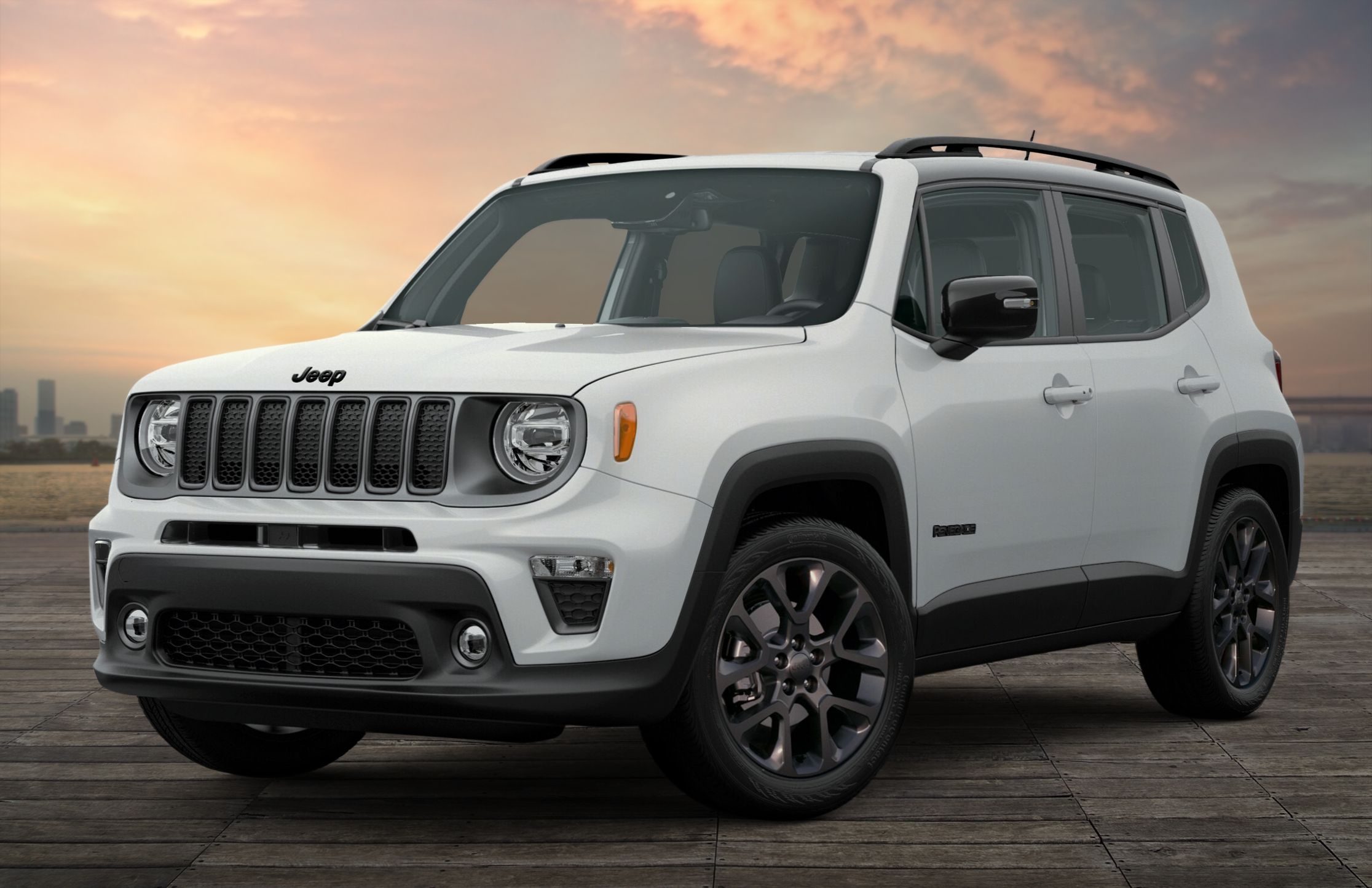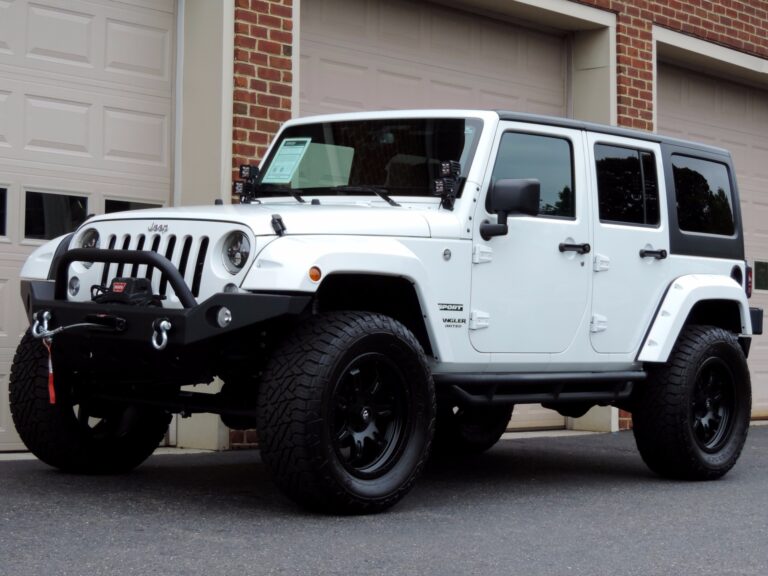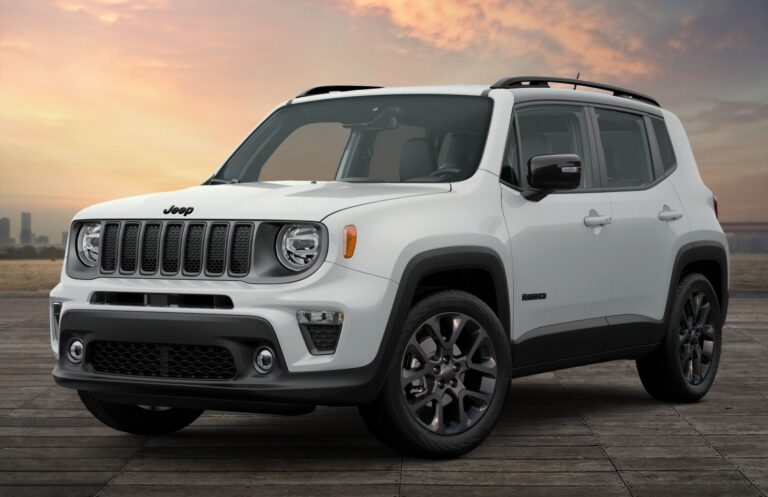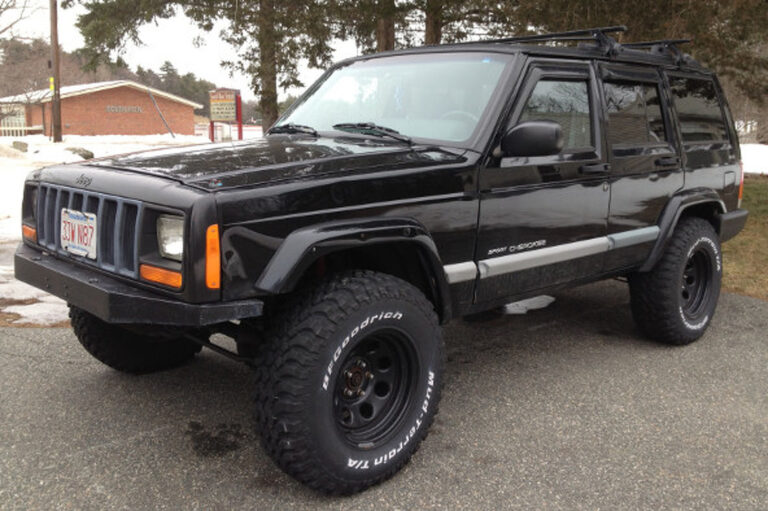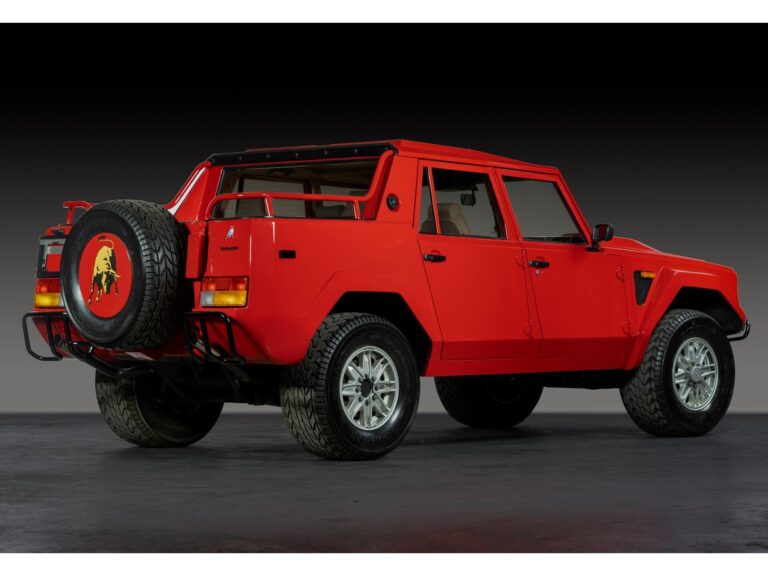Jeep Cherokee Tires And Rims For Sale: A Comprehensive Buyer’s Guide
Jeep Cherokee Tires And Rims For Sale: A Comprehensive Buyer’s Guide /jeeps.truckstrend.com
The Jeep Cherokee, an icon of versatility and rugged capability, has graced roads and trails for decades. Whether you own a classic XJ, a modern KL, or anything in between, the tires and rims you choose are paramount to its performance, safety, and aesthetic appeal. Far from being mere accessories, they are fundamental components that dictate everything from fuel efficiency and ride comfort to off-road prowess and braking ability. This comprehensive guide delves into the world of Jeep Cherokee tires and rims for sale, offering insights, practical advice, and everything you need to make an informed purchase.
Understanding Your Jeep Cherokee’s Tire and Rim Needs
Jeep Cherokee Tires And Rims For Sale: A Comprehensive Buyer’s Guide
Before diving into the vast market of tires and rims, it’s crucial to understand the specific requirements of your Jeep Cherokee. Different generations (XJ, KJ, KK, KL) have unique stock specifications for bolt patterns, offsets, and recommended tire sizes. Deviating too far from these can lead to issues like rubbing, speedometer inaccuracies, and compromised handling.
- Generational Differences:
- XJ (1984-2001): Often came with 15-inch wheels, known for their solid axle simplicity. Popular for larger aftermarket tires (e.g., 31-33 inches with lift).
- KJ (Liberty, 2002-2007): Typically 16-inch wheels, independent front suspension.
- KK (Liberty, 2008-2012): Similar to KJ, often 16 or 17-inch wheels.
- KL (2014-Present): The modern unibody Cherokee, featuring 17 to 20-inch wheels depending on trim. More sensitive to aggressive tire sizes without modification.

- Stock vs. Aftermarket: Your vehicle’s factory specifications are a good baseline. However, many Cherokee owners opt for aftermarket solutions to enhance off-road capability, improve aesthetics, or simply replace worn components. Be mindful that aftermarket choices, especially larger sizes, may necessitate lift kits, fender trimming, or other modifications.
- Matching Tires to Rims: Tires and rims are a symbiotic pair. The tire’s width must be compatible with the rim’s width. An improperly matched set can lead to poor bead seating, uneven wear, or even dangerous blowouts.
Types of Tires for Your Jeep Cherokee
The right tire depends heavily on your primary driving environment and aspirations.
- All-Season (AS) Tires:
- Description: Designed for balanced performance in various conditions, including light snow. They offer a comfortable ride and good fuel economy.
- Ideal For: Daily drivers, city commuting, highway travel.
- Pros: Versatile, quiet, long tread life, good value.
- Cons: Limited performance in deep snow or serious off-road conditions.

- All-Terrain (A/T) Tires:
- Description: A popular choice for Cherokee owners, balancing on-road manners with respectable off-road grip. They feature more aggressive tread patterns than AS tires.
- Ideal For: Drivers who split time between pavement and moderate trails, overlanding.
- Pros: Good compromise, durable, capable in dirt, gravel, and light mud.
- Cons: Can be slightly noisier than AS tires, less aggressive than M/T tires.
- Mud-Terrain (M/T) Tires:
- Description: Characterized by large, aggressive tread blocks and deep voids, designed for maximum traction in mud, rocks, and challenging off-road terrain.
- Ideal For: Dedicated off-road enthusiasts, rock crawling, extreme trail driving.
- Pros: Unmatched off-road performance, excellent self-cleaning properties.
- Cons: Noisy on pavement, reduced fuel economy, faster wear on asphalt, less comfortable ride.
- Winter/Snow Tires:
- Description: Made with specialized rubber compounds that remain flexible in cold temperatures and aggressive tread patterns with siping for enhanced grip on snow and ice.
- Ideal For: Regions with harsh winters, maximum safety in slippery conditions.
- Pros: Superior traction and braking in winter, crucial for safety.
- Cons: Should be removed in warmer weather as soft compound wears quickly, reduced performance on dry pavement.
When selecting tires, pay attention to:
- Load Index and Speed Rating: Ensure they meet or exceed your vehicle’s requirements.
- Tread Pattern: Affects traction, noise, and wear.
- Sidewall Strength: Important for off-roading to resist punctures.
Types of Rims for Your Jeep Cherokee
Rims (or wheels) are not just about aesthetics; they impact weight, strength, and heat dissipation.
- Steel Wheels:
- Description: Heavy, durable, and affordable. Often found on base models or chosen for dedicated off-road use due to their ability to withstand impact and be easily repaired.
- Pros: Cost-effective, very strong, good for rock crawling, can be hammered back into shape.
- Cons: Heavy (impacts fuel economy and handling), less attractive, prone to rust.
- Alloy Wheels (Aluminum):
- Description: Lighter than steel, offer better heat dissipation for brakes, and come in a vast array of designs and finishes. Most common aftermarket choice.
- Pros: Lighter (improves handling, fuel economy, braking), better aesthetics, wider design choices, better heat dissipation.
- Cons: More expensive, can crack or bend more easily than steel under severe impact, harder to repair.
Key Rim Specifications to Consider:
- Diameter: Common sizes are 15-20 inches, depending on the Cherokee generation.
- Width: Must match the recommended range for your chosen tire.
- Bolt Pattern (PCD): The arrangement of lug holes. Most Cherokees use a 5×4.5" (5×114.3mm) pattern for XJ/KJ/KK, and a 5x110mm or 5x127mm for KL, depending on the year/trim. Always double-check your specific model’s bolt pattern.
- Offset: The distance from the wheel’s mounting surface to its true centerline. A positive offset tucks the wheel in, a negative offset pushes it out. Affects clearance and stance.
- Backspacing: The distance from the wheel’s mounting surface to the back edge of the rim. Related to offset, affects how much the wheel sticks out.
Where to Find Jeep Cherokee Tires and Rims For Sale
The market offers a wide range of options for new and used tires and rims.
- New Options:
- Online Retailers: Websites like Tire Rack, Discount Tire Direct, Quadratec, Summit Racing, and Amazon offer vast selections, competitive pricing, and often free shipping. They provide detailed specifications and customer reviews.
- Local Tire Shops: Brick-and-mortar stores provide expert advice, professional installation, balancing, and alignment services. They can also handle warranty issues.
- Dealerships: While often pricier, dealerships guarantee OEM compatibility and quality, especially for stock replacements.
- Specialty Off-Road Stores: These shops cater specifically to the off-road community, offering knowledgeable staff and a curated selection of rugged options.
- Used Options (Buy with Caution):
- Online Marketplaces: Craigslist, Facebook Marketplace, and eBay are popular for finding used sets. Prices can be excellent, but buyer beware.
- Local Junkyards/Salvage Yards: Can be a treasure trove for OEM wheels at low prices, but condition varies widely.
- Jeep Forums and Social Media Groups: Enthusiast communities often have "for sale" sections where members sell used parts.
- Pros of Used: Significant cost savings.
- Cons of Used: No warranty, unknown history (accidents, repairs), potential for hidden damage (cracks, bends, uneven wear), older DOT dates on tires. Always inspect thoroughly and ask questions.
Key Considerations Before Buying
Making the right choice requires careful thought about several factors:
- Budget: Set a realistic budget, remembering to factor in installation, balancing, and potential TPMS sensor costs.
- Intended Use: Will your Cherokee be a daily commuter, a weekend warrior, or an extreme off-roader? Your answer dictates tire type and rim strength.
- Vehicle Modifications: If you plan on lifting your Cherokee or installing fender flares, these modifications will influence the maximum tire and rim size you can accommodate without rubbing.
- Legal Requirements: Some regions have laws regarding tire protrusion beyond fender flares, tire size limits, or minimum tread depth.
- TPMS (Tire Pressure Monitoring System): Modern Cherokees (roughly 2007+) have TPMS sensors in each wheel. If you buy new rims, you’ll need to transfer your old sensors or purchase new ones, and they may require reprogramming.
- Installation and Balancing: Professional installation is highly recommended to ensure proper fitment, balance, and safety. Improper balancing can lead to vibrations, premature wear, and steering issues.
Tips for a Successful Purchase
- Research Compatibility Thoroughly: Use online fitment guides, consult forums, or ask a professional. Verify bolt pattern, diameter, width, offset, and backspacing.
- Read Reviews: Look for reviews from other Jeep Cherokee owners who have used the specific tires or rims you’re considering.
- Inspect Used Items Meticulously: Check for cracks, bends, curb rash, uneven tire wear, and DOT date codes on tires (tires older than 6-7 years, even with good tread, may be unsafe).
- Ask Questions: Don’t hesitate to ask sellers or tire shop staff about specifications, warranties, and return policies.
- Factor in Additional Costs: Remember installation, balancing, TPMS, and possibly new lug nuts.
Challenges and Solutions
- Tire Rubbing: A common issue when upsizing tires.
- Solutions: Lift kits, fender trimming, wheel spacers (use with caution and research), or adjusting offset.
- TPMS Recalibration: New sensors often need to be "relearned" by the vehicle.
- Solutions: Many tire shops can do this, or some OBD-II scanners have the capability.
- Balancing Larger Tires: Aggressive or very large tires can be challenging to balance, leading to vibrations.
- Solutions: Road force balancing, bead balancing, or professional shops specializing in off-road setups.
- Finding Rare Sizes: Older Cherokee models or specific aftermarket setups might require uncommon tire or rim sizes.
- Solutions: Specialty off-road retailers, online forums, or custom orders.
Sample Price Table: Jeep Cherokee Tires and Rims
Please note: These are estimated price ranges per item (unless specified as a set) and can vary significantly based on brand, specific model, current market conditions, sales, and location.
| Item Category | Type/Description | Price Range (Per Item) | Notes |
|---|---|---|---|
| Tires | All-Season (Budget) | $100 – $180 | Good for daily driving, basic performance. |
| All-Season (Mid-Range) | $180 – $250 | Better tread life, quieter ride, improved wet traction. | |
| All-Terrain (A/T) | $200 – $350 | Versatile, good off-road grip, decent on-road manners. | |
| Mud-Terrain (M/T) | $280 – $450+ | Aggressive tread for serious off-roading, louder on-road. | |
| Winter/Snow | $150 – $300 | Specialized for cold weather and slippery conditions. | |
| Rims | Steel Wheels (Basic) | $80 – $150 | Durable, affordable, often for off-road or winter use. |
| Alloy Wheels (Entry-Level) | $150 – $250 | Lighter, better aesthetics, improved heat dissipation. | |
| Alloy Wheels (Premium/Off-Road Specific) | $250 – $500+ | High-strength, specialized designs, popular aftermarket brands. | |
| Packages (Tires & Rims – Set of 4) | Basic All-Season Setup | $700 – $1200 | Ideal for stock replacement, daily driving. |
| Mid-Range A/T Off-Road Setup | $1200 – $2500 | Popular for light to moderate off-roading, balanced performance. | |
| Premium M/T Extreme Off-Road Setup | $2500 – $4000+ | For serious enthusiasts, often requires lift and other mods. | |
| Additional Costs (Per Set) | Installation & Balancing | $80 – $200 | Essential service, varies by shop. |
| TPMS Sensors (if needed) | $120 – $320 ($30-$80/sensor) | Required for modern Cherokees, can be reused or replaced. | |
| Wheel Lugs/Nuts | $20 – $50 | Often included with new rims, but check. |
Frequently Asked Questions (FAQ)
Q1: Can I put larger tires on my Jeep Cherokee without a lift?
A1: It depends on the generation and how much larger. Generally, mild upsizing (e.g., one tire size increase) might be possible on some stock Cherokees (especially XJ), but significant increases will almost certainly require a lift kit, fender trimming, or other modifications to prevent rubbing. Always check specific fitment guides for your Cherokee model.
Q2: What is the most common bolt pattern for Jeep Cherokees?
A2: For XJ (1984-2001), KJ (2002-2007), and KK (2008-2012) models, the common bolt pattern is 5×4.5 inches (or 5×114.3mm). For the modern KL (2014-Present) Cherokee, it varies by year and trim, often being 5x110mm or 5x127mm. Always verify your specific vehicle’s bolt pattern before purchasing.
Q3: Should I buy new or used tires and rims?
A3: New offers peace of mind with warranties, full tread life, and no hidden damage. Used can save a lot of money but comes with risks of unknown history, potential damage, and limited tire life. For safety, new is always preferred, especially for tires. If buying used, inspect thoroughly and be aware of the tire’s DOT date code.
Q4: Do I need new TPMS sensors if I buy new rims?
A4: Not necessarily. If your current wheels have functioning TPMS sensors, they can often be transferred to your new rims by a professional. However, if the old sensors are damaged, very old, or incompatible, you’ll need new ones, which will then need to be programmed to your vehicle.
Q5: How does wheel offset affect my Jeep Cherokee?
A5: Offset dictates how far your wheel sticks out or tucks in relative to the fender. A positive offset means the wheel is more tucked in, while a negative offset pushes it further out. Incorrect offset can cause tires to rub against suspension components or fender flares, and can also affect steering geometry and bearing wear.
Q6: What’s the best tire for both highway driving and occasional off-roading?
A6: An All-Terrain (A/T) tire is generally the best compromise. It offers a good balance of on-road comfort, decent fuel economy, and sufficient grip for light to moderate off-road trails.
Conclusion
Choosing the right tires and rims for your Jeep Cherokee is a critical decision that impacts its performance, safety, and overall driving experience. Whether you’re upgrading for enhanced off-road capability, improving on-road comfort, or simply replacing worn components, understanding the types available, key specifications, and where to purchase them is paramount. By carefully considering your vehicle’s needs, your driving habits, and your budget, you can confidently navigate the market for Jeep Cherokee tires and rims for sale, ensuring your iconic SUV continues to perform at its best, wherever the road (or trail) takes you.

